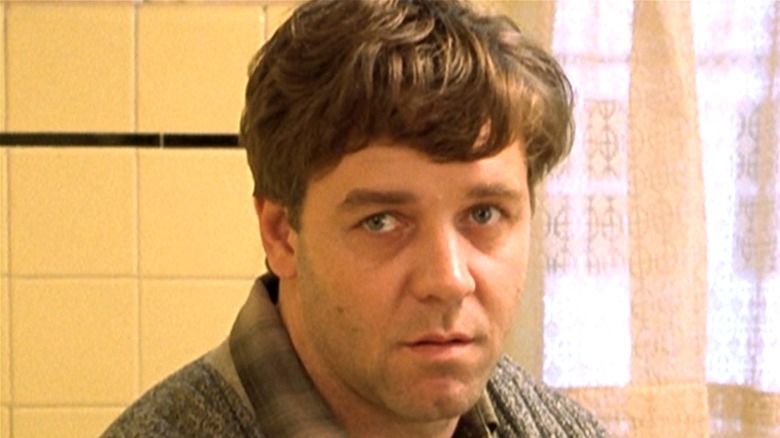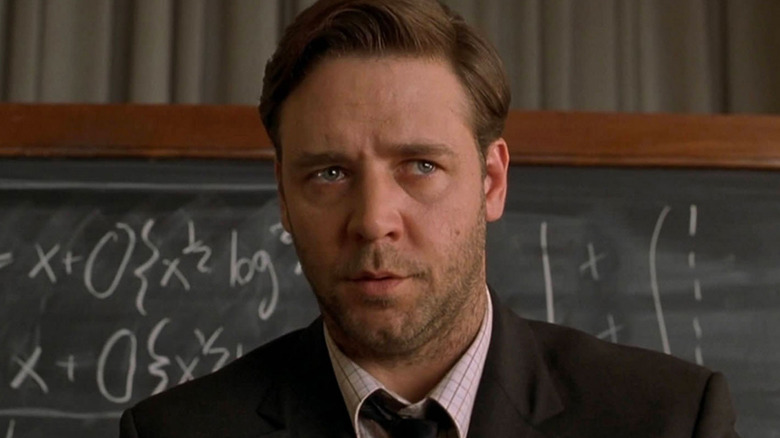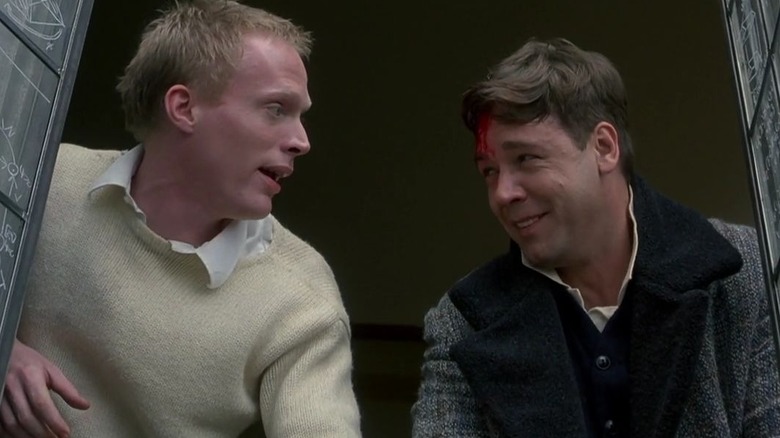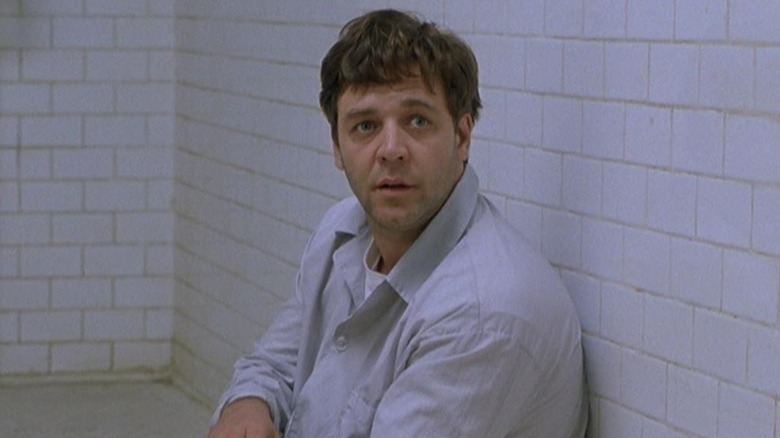Is A Beautiful Mind An Accurate Portrayal Of Schizophrenia?
Attempting to show the struggles of any particular illness on film always involves sensitive elements that need to be handled with care: Be too blasé with the issue, and it may soften the severe battle for those that suffer from it. On the other hand, if you over-embellish certain elements, it can almost skew the common understanding of an illness and stigmatize it for those that deal with it every day. This was the tightrope that Ron Howard and his cast had to walk along when it came to the 2005 film, "A Beautiful Mind." Nominated for eight Academy Awards (via IMDB) and winning half of them including, Best Picture, Best Director, Best Adapted Screenplay, and Best Supporting Actress going to Jennifer Connelly, the film told the true story of Nobel Prize-winning mathematician, John Nash, who was diagnosed with schizophrenia.
Russell Crowe took on the demanding and delicate role of Nash, that earned him an Oscar nomination. As impressive as it was, though, just how solid was this portrayal of a man struggling to differentiate reality from his own mental projections? As it turns out, a few elements of Nash's story deviated from the truth in Howard's film. Not because of poor research or consideration, but the medium in which it was displayed.
A decades worth of errors
The 2005 film that told Nash's story, "A Beautiful Mind," sees the mathematician enroll at Princeton University in his early 20s and already showing signs of mental health issues. Awkward around other people and emotionally detached in conversations, Nash shows key signs of someone with this condition, which may be accurate scientifically ... but not necessarily historically, when it comes to Nash himself.
According to the National Alliance on Mental Illness (NAMI), the average age for men showing signs of schizophrenia is in their late teens to early 20s. This would make sense with Nash enduring some of the various uncomfortable situations he finds himself during his time at Princeton, unintentionally belittling his classmates for basic ideas and making jokes that don't quite land. However, Nash wasn't diagnosed until the 1950s, when he was in his early 30s. While Crowe's portrayal in certain environments is correct, it does present issues that may not surfaced for another ten years in Nash's specific case, but which make sense to display on film as a way of indicating his condition.
John's hallucinations shouldn't be seen
Through the tumultuous period of Nash discovering his genius and the condition that impedes him, he meets his good friend and college roommate Charles Herman (Paul Bettany). An English student who is fond of parties, women, hangovers and is eventually revealed to be one of Nash's earlier hallucinations. From there, various other characters begin to appear from Nash's creation, including Ed Harris' short-tempered and intense government agent, William Parcher, who "enlists" John's help to uncover codes linked to a Russian plot hidden in the pages of magazines and newspapers.
Nash's encounters with this particular character are heated and have ramifications on those around him, including his wife and child. Creating a tremendous amount of tension in the film and testing Nash's stability as he tries to keep hold of the reality he's slipping from, how it's displayed isn't necessarily accurate to how those with schizophrenia interact with their manifestations.
Speaking to ABC in 2006, Dr. Steve Lamberti, an associate professor of psychiatry at the University of Rochester, explained that "the movie's portrayal of Dr. Nash seeing and conversing with life-like 'people' is not what most individuals who suffer from schizophrenia experience." Instead, a more common symptom is for voices to be heard without warning, with no visual cue of who it belongs to. Also, any seemingly visible display for the sufferer will be a skewed one that is noticeably different from the rest of reality.
Nash's road to recovery is the right one with the occasional wrong turn
The film eventually sees Nash accepting and overcoming his schizophrenia, following his diagnosis and eventual denial of the "people" that he's been interacting with. That being said, elements of Nash's recovery in the film, as harrowing as they are, were sadly correct.
Nash was sent to a psychiatric hospital where he underwent insulin coma therapy, which would lead the patient to have regularly scheduled comas following large doses. The process was eventually discredited and replaced with anti-psychotic drugs. The film also details Nash's relapse after concluding the medication is impeding his work, leading him to deteriorate and, at times, for the hallucinations to return. Lamberti agreed that the film accurately displayed medicine not being the "cure-all" conclusion. That being said, the time spent was far longer for Nash in real life, who fought the condition for decades (via Banyan Mental Health).
Lamberti also agreed that his family eventually adapting and helping him with his condition did hold truth and is a recommended for those diagnosed. Speaking to ABC, he explained, "the importance of family support has been increasingly recognized in the field of psychiatry over the past 20 years, and new forms of family education and treatment have been developed." Overall, it seems that "A Beautiful Mind" may have applied story mechanics and twists in the timeline to tell Nash's story, but there are enough elements ensuring it was an accurate one, all the same.



